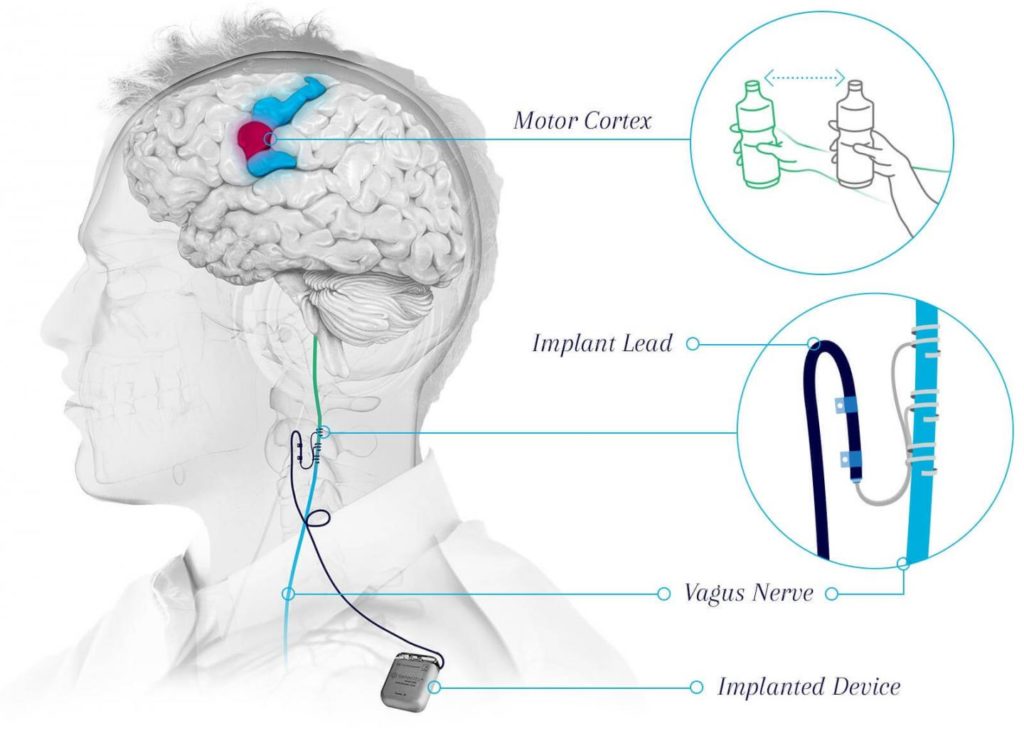
Vagus nerve stimulation, or VNS, during post-stroke rehabilitation can significantly boost the improvement rate of arm and hand function, a new study finds.
VNS sends mild pulses of electrical energy to the brain via a cranial nerve called the vagus nerve. It is typically limited for use in people with epilepsy or treatment-resistant depression, according to the American Association of Neurological Surgeons.
In the current study, investigators followed the progress of 108 patients who had received a VNS implant. Participants had six weeks of in-clinic physical and occupational therapy followed by three months of home-based therapy. The VNS treatment was delivered during rehabilitation exercises.
Participants showed double or triple the improvement in function when compared with their peers who received intense rehabilitation with sham stimulation, investigators reported. The researchers found no unexpected or serious adverse events associated with the VNS system, added senior author Teresa Kimberley, Ph.D., PT, of the MGH Institutes of Health Professions, Boston.
“How to optimize recovery after a stroke has been studied for decades, but there has been little shown to dramatically improve peoples’ daily lives,” Kimberley said in a statement.
“Using vagus nerve stimulation paired with repetitions of therapeutic movement appears to help ‘rewire’ the brain to strengthen the brain pathways needed to perform the everyday tasks people want to be able to do,” she said.

Loss of arm function is very common in stroke, the researchers added. It occurs in approximately 80% of survivors, and as many as 60% of this population continue to experience problems six months later, they said.
The results show a unique intersection between neurosurgery and neurorehabilitation, said the study’s lead neurosurgeon, Charles Liu, M.D., Ph.D., of the University of Southern California – Health Sciences.
“Not only were the results clinically meaningful, the fact that these patients were at least nine months post-stroke and in some instances years out, points to the possibility that meaningful improvements can be achieved even years after a stroke,” Liu concluded.
Full findings were published in The Lancet.




